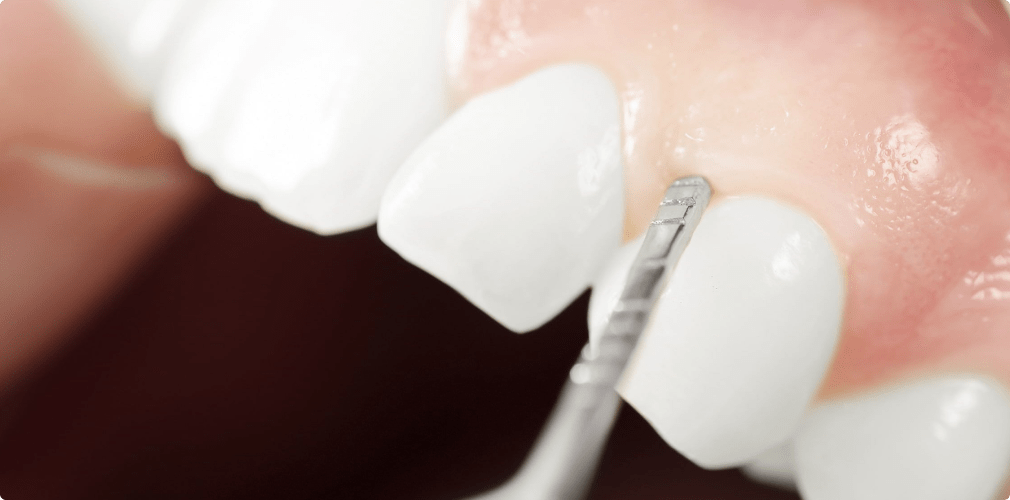To understand what it is, it’s easiest to look first at the anatomy of the problem: the periodontium. Indeed, although it is often mistakenly referred to as “gum disease”, it actually affects many more structures. The periodontium is the set of structures that support your teeth and keep them in place in your mouth. This ensemble is made up of the gum, the alveolar bone surrounding the tooth, the desmodont (alveolar-dental ligament) and the cementum (mineral part on the surface of the dental root, to which the ligament is attached). All these structures can be affected by periodontal disease.

Where does periodontal disease come from?
The main cause of this disease is dental plaque: a bacterial biofilm that forms and remains on the teeth (the whitish substance that scrapes easily off the teeth). It is this plaque which, through mineralization, can become tartar. This plaque attacks the periodontal structures, which then become inflamed, painful… pathological! It is a progressive disease, the first stage of which is gingivitis.
Apart from plaque, periodontal disease is a multifactorial condition, as it is caused by a combination of factors conducive to its onset. For example, stress, smoking, poor oral hygiene and certain diseases such as diabetes are all contributing factors. They all have an impact either directly on the periodontium or on the bacterial biofilm. To manage these pathologies, we need to take an interest in all these factors, and maintain rigorous oral hygiene.
How does it manifest itself?
The consequences of periodontal disease are diverse: bleeding gums, pain, gingival recession, tooth mobility, bone loss… Periodontal pockets are characterized by a wider and deeper space than usual between the gum and the tooth. These pockets are often filled with plaque, which further contributes to the growth of the pockets. If left untreated, a vicious circle sets in, helping to perpetuate the disease.
What can we do?
As explained above, the first step is to address all the factors that can lead to tooth decay, and to practice meticulous oral hygiene. To go hand in hand with this, regular check-ups with the dental surgeon are imperative. He will carry out a check-up and scaling, and tell you whether periodontal treatment is necessary. There are a multitude of approaches and management options, including “surgical” and “non-surgical” treatments.
Non-surgical periodontal treatments
This is the periodontal treatment generally required in the first instance. After a thorough assessment of your situation and hygiene habits, the practitioner performs a dental scaling and subgingival disinfection.
In addition to conventional scaling, this treatment also removes tartar and plaque located in the periodontal pockets around the roots of the teeth. This can be done with ultrasound or curettes in one or more sessions, for example. In addition to these mechanical means, there are also treatments to manage disbiosis (the imbalance of the oral microbiota observed in periodontal disease). Each treatment is of course discussed with the dental surgeon on a case-by-case basis, according to individual needs.
Periodontal surgery
Surgery is an additional recourse in periodontal management. It is a tool used when non-surgical treatments alone have proved insufficient, but it can also be indicated in many other situations (during implant placement, for example). These treatments include a variety of procedures, such as sanitization flaps (for scaling with gingival detachment during the procedure), gingival grafts, tissue regeneration, etc.
About gingival grafts:
The most commonly used grafts are epithelial-conjunctival grafts and embedded conjunctival grafts. Indications are based on periodontal loss and aesthetic expectations. In both cases, it’s an autograft, as periodontal tissue is harvested directly from the patient (usually from the palate).
Also worth seeing: General dental care at Dr Maire’s office in Lisbon